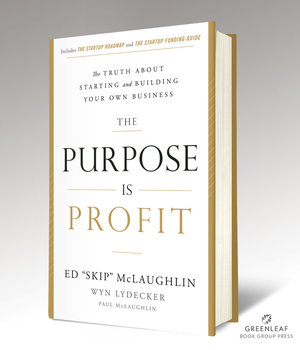
Previously published in YoungUpstarts
By Ed McLaughlin and Wyn Lydecker
You have a great idea for a new business and can’t wait to start up. Should you rush to market with a minimal viable product (MVP) and risk the cycle of failing, pivoting, and then starting again? Or should you do some planning first? The trend toward launching without planning may be why the failure rate for venture capital-backed businesses is as high as 75 percent. Yet, if you take too much time to plan, you may never launch your business at all. Recognizing this challenge, we developed a short list of pre-launch steps designed to increase your probability of startup success.
The steps focus you on developing your business model. But they only require “the back of an envelope” to figure out how you are going to make money, how much it is going to cost to run your business, and how soon you will generate a profit and reach breakeven. Having these estimates in hand will help you decide if you can bootstrap your business or if you will need to raise funding.
Taking the following six steps will give you confidence that you are ready to start up:
1. Don’t start up until you know how you’re going to generate revenue (simple estimates will suffice).
- How many customers are there?
- How much product will each customer buy?
- How will you price your product (share of value, cost-plus, market pricing)?
- Calculate revenue by estimating monthly sales (customers x units x price)
- Calculate revenue per quarter and revenue per year
2. Don’t start up until you understand how much it will cost to run your business (do your homework on expenses).
- How much will it cost to produce your product (manufacturing & distribution)?
- Who will be on your management team and your staff, and how much will it cost to compensate them (equity and/or salary)?
- Where will you work and how much will it cost (rent per month/year, furniture costs, utilities, & supplies)?
- How will you communicate with your customers and how much will it cost (computers, printers, mobile phones, internet access, website, & hosting)?
- How will you brand the business (name, logo, tagline)?
- How much will it cost to sell your product (marketing, travel, & entertainment)?
- How much will it cost for risk management and compliance (legal, accounting, & insurance)?
3. Don’t start up until you know how you’re going to make a profit (back of the envelope).
- Revenue minus Cost to Run Your Business equals Profit or (Loss)
4. Don’t start up until you have preorders to validate your business model and liftoff plans.
- A preorder is an informal commitment from customers to purchase your product before it is formally offered to the public
5. Don’t start up until you have lined up the funding you need to reach breakeven (typically 18 months of operating capital).
- Estimate how long it will take you to reach breakeven
- Determine your startup and operating capital needs
- Generate a list of funding sources and alternatives
6. Don’t start up until you have a crystal-clear understanding of the impact of your choice of startup funding on your costs and control.
- Self-funding or bootstrapping will maximize control and avoid outside partners and interest payments
- Selling equity will avoid interest payments but reduce control by introducing outside partners
- Raising debt financing will let you maintain control by avoiding outside partners but will require interest payments
I completed the financial modeling portion of this exercise in my kitchen with my two founding partners. We hashed things out with a flip chart and markers to get comfortable that we had a financial model that would work. It took about two months to figure things out and be confident that we were on the right track. I secured preorders by meeting in the field with my first two customers. Once we had these orders in hand, combined with our financial model, we were able to make the decision to bootstrap and launch.
If you are planning on starting a business, I urge you to go through all six of these steps. If you do, you can increase your probability of startup success.
Ed “Skip” McLaughlin is the author of The Purpose Is Profit: The Truth about Starting and Building Your Own Business, along with co-authors Wyn Lydecker and Paul McLaughlin. The Purpose Is Profit (Greenleaf Book Group) is available in bookstores now.
Ed McLaughlin is the founder of four businesses and is currently running Blue Sunsets LLC, a real estate and angel investment firm based in Darien, CT. Follow him at @purposeisprofit. Wyn Lydecker is the founder of Upstart Business Planning, where she works with entrepreneurs to develop plans that answer the questions investors ask most often. Follow her at @upstartwyn.
Order The Purpose Is Profit here.
Copyright © 2016 by Ed McLaughlin All rights reserved.





Leave A Comment